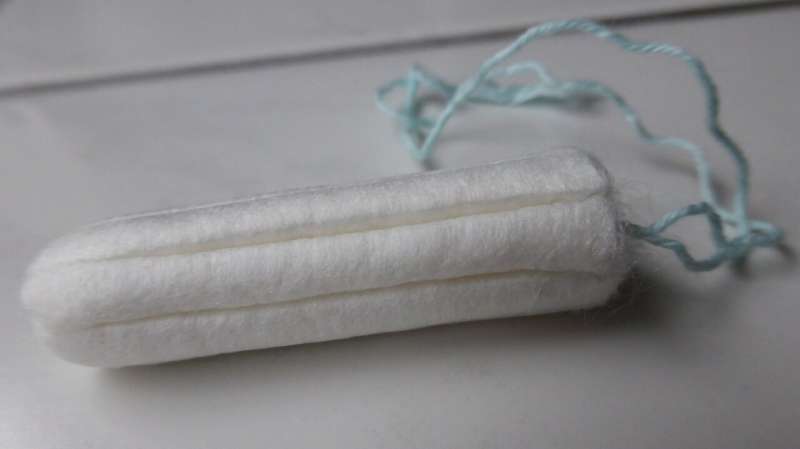This article has been reviewed according to Science X's editorial process and policies. Editors have highlighted the following attributes while ensuring the content's credibility:
fact-checked
trusted source
proofread
Endocrine-disrupting chemicals found in menstrual products including tampons, pads, and liners

The average menstruator will use over 11,000 tampons or sanitary pads in their lifetime. Vaginal and vulvar tissue that touch pads and tampons is highly permeable. Through this permeable tissue, chemicals are absorbed without being metabolized, which makes endocrine-disrupting chemicals potentially dangerous when found in menstrual products.
Endocrine-disrupting chemicals can interfere with human hormones and cause medical issues, including gynecological conditions such as endometriosis and uterine fibroids.
Joanna Marroquin, a Mason Ph.D. in Public Health student, and Associate Professor Anna Pollack reviewed studies conducted since 2103 that measured chemicals in menstrual products, and that measured human biomarkers of chemical exposure and determined that endocrine-disrupting chemicals were found in menstrual products, including tampons, pads, and liners.
"Identifying chemicals in menstrual products that menstruators regularly use is important because exposure through these products can impact menstruators' reproductive health," said Marroquin, the paper's first author.
The study found that menstrual products contain a variety of endocrine-disrupting chemicals, including phthalates, volatile organic compounds, parabens, environmental phenols, fragrance chemicals, dioxins, and dioxin-like compounds.
This issue is even more relevant thanks to the Robin Danielson Menstrual Product and Intimate Care Product Safety Act of 2023, which was introduced in the U.S. House of Representatives in October 2023. The Act would establish a program of research regarding the risks posed by the presence of dioxins, phthalates, pesticides, chemical fragrances, and other components in menstrual products and intimate care products.
This literature reviewed 15 papers published between 2013 and 2023 that tested menstrual products in the U.S., Japan, and South Korea. The researchers note that there are few publications available that measure chemicals in menstrual products.
Additionally, though forever chemicals (PFAS) have been found in menstrual underwear, there is a lack of peer-reviewed research on menstrual underwear and other newly-popular-in-the-U.S. products such as menstrual cups and disks.
Chemicals in menstrual products: A systematic review was published in BJOG, an international journal of obstetrics and gynecology. Additional authors include Marianthi-Anna Kiomourtzoglou from Mailman School of Public Health, Columbia University, and Alexandra Scranton from Women's Voices for the Earth.
More information: Joanna Marroquin et al, Chemicals in menstrual products: A systematic review, BJOG: An International Journal of Obstetrics & Gynaecology (2023). DOI: 10.1111/1471-0528.17668




















